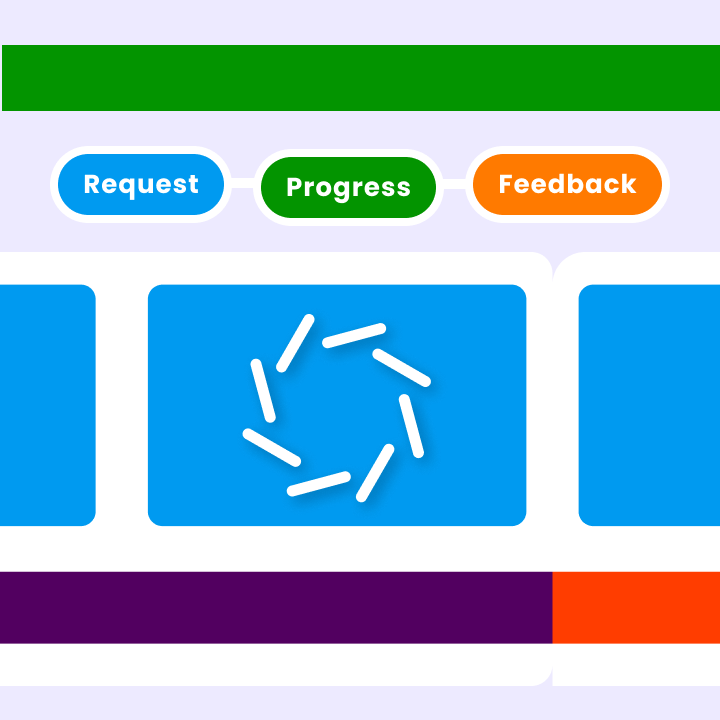In today’s fast-paced business environment, traditional project planning often feels outdated, like trying to navigate a storm with an old map. Teams invest months in creating detailed plans, only to see them fall apart at the first sign of change. In contrast, agile teams excel in uncertainty, consistently delivering value while adapting to shifting requirements. The key isn’t to abandon planning altogether; it’s to adopt a new approach that transforms planning from a rigid task into a dynamic competitive advantage.
What Is Agile Planning?
Agile planning marks a significant shift from traditional project management. It prioritizes adaptability, collaboration, and continuous improvement over strict adherence to fixed schedules. Unlike conventional planning, which tries to predict and control every aspect of a project from the start, agile planning embraces uncertainty and incorporates flexibility into the process.
At its essence, agile planning involves creating just enough structure to move forward while remaining ready to pivot as circumstances change. This approach recognizes that in today’s rapidly evolving business landscape, the ability to respond to change is more valuable than sticking to a predetermined plan.
The agile planning process operates on multiple timeframes simultaneously. Strategic planning focuses on long-term vision and goals, release planning connects strategy with execution, and sprint planning addresses immediate tactical decisions. This layered approach ensures alignment between overarching objectives and daily activities while allowing for adjustments as needed.
Agile vs. Traditional Planning: Key Differences
Traditional planning follows a waterfall model, where each phase must be completed before the next begins. Requirements are gathered upfront, detailed specifications are created, and timelines are set early on. This method assumes that requirements will remain stable and that all risks can be identified and mitigated in advance.
In contrast, agile planning adopts an iterative approach, where planning occurs continuously throughout the project lifecycle. Instead of trying to define everything upfront, agile teams plan in shorter cycles, allowing for regular reassessment and adjustments based on new information and changing priorities.
The fundamental difference lies in how each approach deals with uncertainty. Traditional planning views uncertainty as a problem to be eliminated through detailed analysis and extended planning phases. Agile planning, however, sees uncertainty as an inherent aspect of complex projects that must be managed through rapid feedback loops and adaptive responses.
Why Agile Planning Is Essential in 2025
The business landscape of 2025 demands exceptional agility. Digital transformation, remote work, and rapidly changing customer expectations have rendered traditional planning methods not only ineffective but potentially detrimental. Organizations that cling to rigid planning find themselves consistently outpaced by more agile competitors.
Market dynamics now shift so quickly that long-term detailed planning can become obsolete before implementation begins. Customer preferences change rapidly, new technologies emerge constantly, and competitive landscapes evolve continuously. In this environment, the ability to adapt quickly is not just an advantage—it’s essential for survival.
Modern teams also operate differently than they did just five years ago. Distributed teams, cross-functional collaboration, and continuous integration and deployment practices require planning approaches that can accommodate rapid iteration and frequent change. Agile planning provides the necessary framework to effectively coordinate these complex, dynamic environments.
Core Elements of Agile Planning
Successful agile planning relies on several foundational elements that set it apart from traditional methods. Understanding these core components is crucial for implementing effective agile planning practices.
Iterative and Incremental Planning
Iterative planning involves cycles where each iteration builds on the knowledge gained from previous ones. Teams do not attempt to plan everything at once; instead, they plan in waves, with each wave providing more detailed information about immediate priorities while maintaining flexibility for future decisions.
Incremental planning focuses on delivering value in small, manageable pieces rather than waiting for the entire project to be completed. Each increment represents a potentially shippable piece of functionality that provides real value to users. This approach reduces risk by allowing for early feedback and ensures that even if the project changes direction, the work completed to date remains valuable.
The combination of iterative and incremental planning creates a rhythm that aligns with the natural pace of software development and business decision-making. Teams can make informed decisions based on actual experience rather than theoretical projections, leading to more accurate and effective plans.
User Stories and Backlogs
User stories are the primary unit of work in agile planning. Unlike traditional requirements documents that focus on system functionality, user stories describe desired outcomes from the user’s perspective. This user-centric approach ensures that planning remains focused on delivering value rather than merely completing tasks.
The product backlog serves as the central repository for all planned work, organized and prioritized based on business value and strategic importance. The backlog is a living document that evolves throughout the project as new requirements emerge and priorities shift. This dynamic nature allows teams to respond to changing needs without derailing the entire planning process.
Effective backlog management involves continuous refinement, where stories are regularly reviewed, updated, and re-prioritized based on new information. This ongoing process ensures that the team is always working on the most valuable items and that the backlog accurately reflects current business priorities.
Continuous Feedback and Flexibility
Agile planning thrives on feedback loops that provide regular opportunities to assess progress, validate assumptions, and adjust plans as needed. These feedback mechanisms operate at multiple levels, from daily stand-ups that address immediate tactical issues to retrospectives that examine broader process improvements.
Customer feedback plays a crucial role in agile planning, with regular reviews and demonstrations offering opportunities to validate that the work aligns with actual user needs. This direct connection between planning and user value ensures that plans remain relevant and focused on outcomes that matter.
The flexibility inherent in agile planning is not about being undisciplined or reactive. Instead, it involves building systematic capabilities for change that allow teams to respond effectively to new information while maintaining momentum toward strategic objectives.
How to Create an Agile Project Plan
Building an effective agile project plan requires a balanced approach that combines structure with flexibility. The following steps outline a framework for developing plans that can adapt to changing conditions while staying focused on strategic goals.
Step 1: Define Your Vision and Roadmap
Every successful agile project starts with a clear vision that outlines the desired outcome and the value it will deliver to users and the business. This vision acts as a guiding star for all planning decisions, helping teams navigate trade-offs when priorities conflict.
The product roadmap translates this vision into a high-level timeline that highlights major milestones and dependencies. Unlike traditional project plans that aim to detail every aspect, agile roadmaps emphasize key themes and outcomes, allowing for tactical flexibility in achieving those results.
Step 2: Plan Releases and Sprints
Release planning connects strategic roadmaps with tactical execution by specifying what will be delivered in each release cycle. Typically lasting 2-3 months, releases represent significant increments of functionality that provide real value to users.
Sprint planning operates at a tactical level, detailing what will be accomplished in each 1-4 week sprint. These plans are specific and focused on immediate tasks and deliverables while ensuring alignment with broader release and strategic objectives.
Step 3: Prioritize the Backlog
Effective backlog prioritization involves balancing various factors, including business value, technical dependencies, risk, and resource availability. The aim is to sequence work in a way that maximizes value delivery while minimizing risk and ensuring technical sustainability.
Regular backlog grooming sessions allow teams to reassess priorities based on new information and changing circumstances. These sessions keep the backlog current and ensure the team is always focused on the most valuable tasks.
Step 4: Estimate and Schedule with Story Points
Using story points for estimation helps gauge the relative effort required for different tasks without getting bogged down in detailed time estimates, which can often be inaccurate. Story points focus on complexity, effort, and uncertainty rather than elapsed time, providing a more stable foundation for planning.
In agile planning, scheduling emphasizes sequencing and capacity over detailed timelines. Teams use their velocity data to understand how much work they can realistically commit to in each sprint while maintaining quality and sustainability.
Step 5: Adapt Based on Feedback
The final step in agile planning is crucial: systematically incorporating feedback to enhance both the product and the planning process. This feedback comes from various sources, including users, stakeholders, team members, and objective metrics.
Adaptation is not just about responding to issues; it’s about proactively improving the planning process based on experience and learning. Teams that excel in agile planning continuously refine their methods based on insights about their context, capabilities, and challenges.
Agile Scheduling Techniques
Effective agile scheduling employs techniques that accommodate uncertainty while providing enough structure to coordinate work across teams and stakeholders. These techniques focus on managing flow and capacity rather than detailed timelines.
Sprint Planning and Timeboxing
Sprint planning establishes fixed time boundaries that offer structure and predictability while allowing flexibility in what can be accomplished within those limits. Timeboxing encourages teams to focus on delivering value rather than perfecting individual tasks, creating regular opportunities for reassessment and adjustment.
The timebox acts as a catalyst, prompting teams to make decisions and trade-offs instead of endlessly debating options. This constraint can paradoxically boost creativity and efficiency by sharpening focus on what truly matters.
Velocity-Based Estimation
Tracking velocity provides teams with data about their actual capacity and productivity, informing future planning decisions. By monitoring how much work is completed in each sprint, teams can make more accurate commitments and identify trends that may indicate areas for improvement or potential issues.
Velocity data should serve as a planning tool rather than a performance metric. The goal is to understand capacity and enhance predictability, not to pressure teams to increase their velocity at the expense of quality or sustainability.
Using Flexible Timelines
Agile scheduling emphasizes flexible timelines that can adapt to changing priorities and unexpected challenges while maintaining a focus on delivering value. This approach shifts from commitment-based planning to forecast-based planning, acknowledging uncertainty while still providing useful guidance.
Buffer management techniques help teams handle variability without derailing entire schedules. By incorporating appropriate buffers into plans and managing them systematically, teams can navigate unexpected challenges while maintaining overall momentum.
Final Thoughts: Planning the Agile Way
Agile planning marks a fundamental shift from trying to predict and control the future to building the capability to respond effectively to change. This shift requires new skills, mindsets, and approaches to collaboration and decision-making.
The most successful agile teams view planning as an ongoing conversation rather than a one-time event. They use planning to align understanding, coordinate activities, and make informed decisions while remaining open to new information and changing circumstances.
As organizations face increasing complexity and uncertainty, the ability to plan effectively in agile environments becomes a critical competitive advantage. The techniques and principles outlined in this guide provide a foundation for developing these capabilities and achieving better outcomes through more effective planning.
Transform your team’s agile planning process with MorningMate, the AI-powered project management software that brings intelligence and automation to every aspect of your planning workflow.




